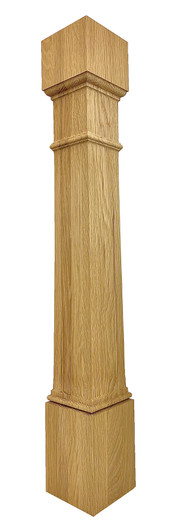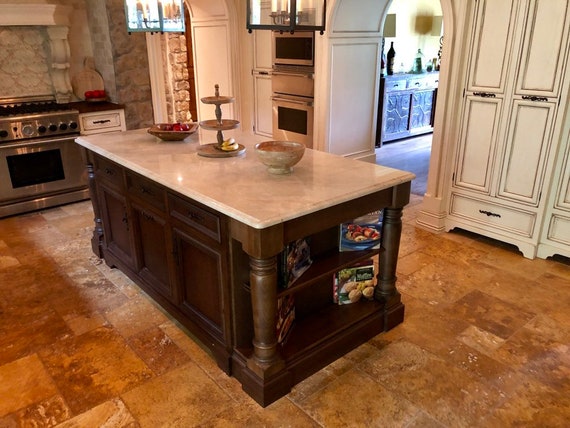Exploring the Crucial Attributes of a Kitchen Area Island Leg for Your Culinary Room
The cooking area island functions as a central center in any type of cooking area, and the option of leg layout is essential in enhancing both its capability and visual allure. Comprehending the vital features of cooking area island legs-- including product options, layout styles, and stability variables-- can considerably influence the general experience within the cooking area. As we check out these components, we will reveal how thoughtful modification and accessories can raise your kitchen island from a simple utility to a striking centerpiece. What details considerations should be focused on to achieve this equilibrium?
Importance of Kitchen Area Island Legs
Cooking area island legs play an essential duty in both the functionality and appearances of a kitchen area. They not just sustain the weight of the island but likewise boost the total design, adding to the cooking area's visual appeal. The selection of legs can dictate the style of the cooking area, be it modern, standard, or rustic.
Functionally, durable and properly developed legs make sure security, allowing for the secure usage of the island for different jobs such as food prep work, eating, or entertaining. Solid legs protect against wobbling and shifting, giving a dependable surface area for day-to-day tasks.
Furthermore, the height and positioning of the legs can influence the comfort degree for those seated at the island. A well-considered elevation can suit bar feceses or chairs, promoting an inviting setting for gatherings.
In addition to these practical factors to consider, cooking area island legs can function as a centerpiece in the room (kitchen island leg). Decorative or uniquely created legs can boost the design visual, making the island a focal point. Hence, selecting the ideal cooking area island legs is vital for stabilizing type and function in any type of cooking room
Product Options for Legs
Picking the ideal material for cooking area island legs substantially impacts both toughness and design. Usual product choices include timber, steel, and rock, each offering distinct benefits.
Wood is a preferred option due to its heat and flexibility. It can be conveniently personalized to match numerous design designs, from rustic to contemporary. Woods like oak and maple offer excellent stamina and longevity, while softer timbers can be more at risk to tear and put on.
Metal legs are favored for their streamlined, contemporary visual. kitchen island leg. Stainless steel and light weight aluminum are not only robust yet likewise immune to corrosion and corrosion, making them ideal for kitchen area settings. They can produce a commercial look and are commonly available in different coatings to match various other kitchen aspects
Rock legs, such as granite or marble, add a component of luxury and security. While much heavier than other materials, they supply outstanding sturdiness and can stand up to substantial weight. However, they might call for added support to guarantee proper balance.
Ultimately, the selection of material should straighten with both practical requirements and the overall layout vision of the cooking area space, guaranteeing that the island legs enhance both energy and appearances.
Layout Styles to Consider
What style styles should be considered when choosing legs for a kitchen area island? The choice of leg style dramatically influences the overall visual of your culinary area. For a contemporary cooking area, sleek and minimalistic leg styles, such as stainless-steel or geometric forms, can improve the modern allure, offering a clean and clean look.
On the other hand, typical cooking areas take advantage of timeless styles such as turned or sculpted wood legs, which include warmth and personality. These choices typically feature detailed details that enhance vintage furnishings. For a rustic setting, think about legs made from reclaimed timber or functioned iron, which bring an organic, natural high quality to the room.
If you lean in the direction of a commercial motif, robust steel legs with a distressed coating may be excellent, offering an edgy yet innovative touch. Furthermore, farmhouse Going Here design cooking areas can integrate beefy legs that evoke a sense of sturdiness and homeliness.

Height and Stability Variables
The height and stability of a kitchen area island are vital components that directly impact its performance and individual experience. An ideal kitchen area island leg must give enough height to accommodate a variety of tasks, from food preparation to laid-back dining.
Security is similarly important, specifically as kitchen area islands frequently serve as focal factors in cooking settings. The leg's accessory to the island's base should be safe and secure, ensuring longevity and durability against the wear and tear of day-to-day use.
Modification and Accessories
Modification options and devices for kitchen island legs can dramatically improve both the aesthetic charm and capability of the area. Homeowners can pick from a range of materials, including steel, wood, and rock, permitting smooth integration with existing kitchen area decor. The option of coating-- be it an all-natural stain, paint, or powder layer-- further customizes the appearance, guaranteeing that the island matches the total design motif.
Along with product and finish, property owners might additionally explore the incorporation of accessories such as ornamental braces, flexible feet, or integrated shelving. Brackets can provide added assistance while adding to a rustic or contemporary visual. Flexible feet are specifically useful for unequal floor covering, ensuring the island remains stable and level, which is critical for both safety and functionality.

Final Thought
Finally, kitchen area island legs offer a crucial duty in supplying security and improving the overall aesthetic of the culinary area. The selection of materials and design styles adds to both performance and aesthetic allure, while factors to consider of elevation and security ensure useful use. Moreover, modification alternatives and devices can boost the cooking area island, making it a distinct focal factor within the home. Therefore, cautious consideration of these features is vital for an efficient kitchen area Full Article style.
The cooking area island offers as a main center in any type of culinary area, and the option of leg design is pivotal in boosting both its functionality and aesthetic charm. Comprehending the vital functions of kitchen island legs-- consisting of product alternatives, style styles, and stability factors-- can significantly influence the general experience within the kitchen.Cooking area island legs play a critical duty in both best site the functionality and aesthetic appeals of a kitchen room.What layout styles should be thought about when choosing legs for a cooking area island?In final thought, cooking area island legs serve a crucial duty in offering security and enhancing the general aesthetic of the culinary room.